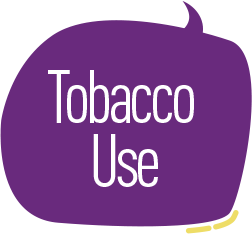Let’s talk about vaping.

It wasn’t long ago that smoking was considered “cool” for teenagers and young adults, even though it was widely known that using cigarettes caused cancer. In recent years, the popularity of cigarettes has declined and has been replaced by a new activity—vaping.
While these electronic cigarettes are generally perceived less harmful than smoking traditional tobacco, they are not harmless. We also do not know the long-term effects of vaping. So it’s a good idea to talk with your child to encourage them to stop vaping—or to not start in the first place.
What parents need to know
Vaping uses an electronic cigarette (also called an e-cig) that heats liquid into a aerosol that is then inhaled and exhaled.
- The most popular vaping devices are Disposable Vapes because they circumvent the flavor ban, and can be purchased easily online or at local stores.
- Vapes come in many shapes and sizes, but most are small & discreet that can resemble modern technology products like USB flash drives, pens, smart watches, erasers, even lipstick
Vaping cartridges, or e-juices, are available in many different flavors that may appeal to young people.
- In addition to nicotine, vape devices can also be filled with other substances such as marijuana and or other drugs.
Since the brain is not fully developed until the age of 25, a young person can be especially at risk of addiction to nicotine, which is already a very addictive substance.
What the law says
- As of July 2020 flavored nicotine vapor products are banned in New York state.
- As of November 2019, the legal age to buy e-cigarettes at a store in New York is 21.
- The legal age to purchase e-cigarettes online is 21, but most websites do not have a stringent age verification process.
- Smoke-Free Laws now include e-cigarettes, which are banned in restaurants, worksites, and bars as well as other public places.
- Free samples of e-cigarettes and their components are prohibited.
Starting the conversation
Here are a few things to keep in mind when talking to your child about vaping and to make the conversation a productive one.
- Show your concern. Express to your child that you’re worried. For example, “You haven’t been yourself lately.”
- Keep a cool head. Try your best not to overreact to what your child has done in the past. Instead, focus on making it clear what you want them to do in the future.
- Be direct. Clearly state your concerns as well as any evidence you’ve found (“You’re not showering, your grades have dropped, and I found a vape pen in your pocket.”).
- Watch your tone of voice. Even though you want to scream and yell, it’s important to speak in a calm, relaxed voice so that you don’t push your teen away.
- Let your teen know you value their honesty and are willing to listen without making judgments. But this doesn’t mean there will not be consequences.
- Try not to be defensive. When your child makes generalizations or critical remarks, don’t take them personally. They are opportunities for discussion.
- Talk about your own memories of being a teen and the mistakes you made. This can help you and your child relate to each other better.
- Show your love. Physical connection can play an important role, too. Put a hand on your teen’s shoulder or give them a hug when it feels right.
- Set up and use family meetings to full advantage. Get input from each person on rules, curfews, and consequences of breaking the rules.
- Give lots of praise and positive feedback. Teens need to hear the “good stuff” just like the rest of us.
We serve our teenagers best when we remind them that all choices come with consequences, just as we parent most effectively when we remember that our teenagers will always have choices. At the same time, don’t be controlled by your teen. While it’s important to listen and be sympathetic to your teen, remember you’re the parent and you know best.
What to say
If your child asks about or hints at vaping:
- Ask what they know and think about vaping. If your child says, “I tried it and thought it was weird,” you’re having one conversation. However, if they respond, “Lots of kids are doing it – I don’t see why it’s a big deal,” you’re having another.
- Mention that you’ve noticed a sweet smell coming from their room or found a strange device that looks like a pen or USB drive.
- Ask your child what they know about vaping and the side effects.
- In the end, we want our teenagers to weigh their options and be self-protective. We can model this approach by saying, “Look, it’s not that I hate fun. It’s that I love you.”
If your child says they vape because it’s healthier than smoking:
- Point out that the safest, healthiest option is to not vape or smoke anything.
- It’s important to talk to your teenagers about vaping and smoking, even if you’re sure they’re not doing it themselves.
- Keep the conversation as natural as possible. For example, you can ask, “What do you think about vaping?” when passing a store window or see an advertisement.
If you find out your child is vaping:
- Make sure they understand that they are more vulnerable to the negative effects of nicotine (including its addictive potential) because their brains are still developing.
- Explain that while e-cigarettes may be safer than regular cigarettes, they still contain toxins, can be addictive and the long term health effects are unknown.
- Remind them of this encouraging news—if they get through high school without smoking (e-cigs or regular cigarettes), they’re less likely to take up smoking later in life.










